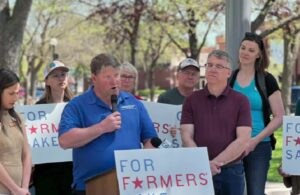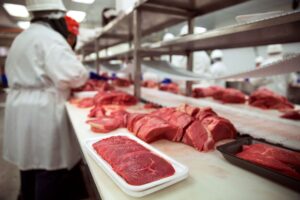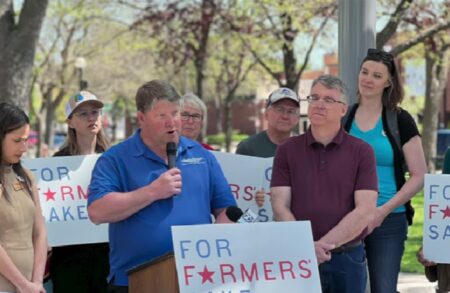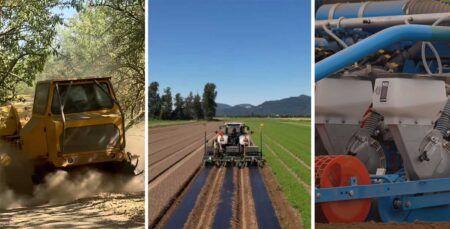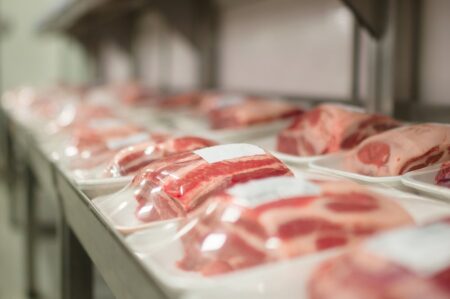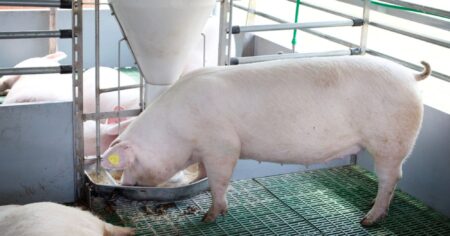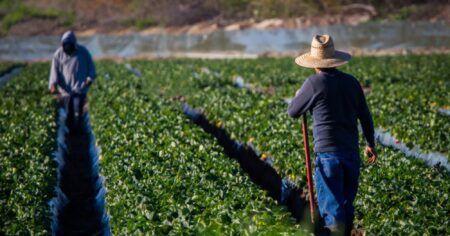By Alena Maschke, The Current
In the late summer heat, the hours move like molasses.
Still, across the cane fields of South Louisiana, migrant workers from Mexico brave the sun and punishing humidity to plant sugarcane. They come from the mountains of Guanajuato and San Luís Potosí, or the tropical coast of Veracruz, working the fields, often up to 70 hours a week.
Their long hours spent in the sun create an estimated economic impact of $4 billion in Louisiana annually from sugarcane alone, according to the American Sugar Cane League. Many return for rice and crawfish harvests, spending most of their year in the U.S., separated from their families back home.
The isolation can be challenging. The question “what do you do with your free time?” earns mostly blank stares. Still, they return, year after year, often bringing brothers, cousins, and nephews with them.
Jesus Tamez, originally from Monterrey, has built a life in South Louisiana, sending his children to school in Lafayette, then off to college. But for most of the men he works with, there isn’t much but the fields.
“We don’t have much of a social life, just work,” he says. “There’s no weddings, no quinceañeras, not like in Mexico.”
Connecting with the locals can be tough, in part because of the language barrier.
“People here are more closed off,” says Javier Aguilera Sanchez, a 29-year-old from Veracruz, a state famous for its colorful Carnival celebration. In Louisiana, Aguilera Sanchez works the cane field to provide for his family and young daughter back home.
Their time in Louisiana is limited, a means to an end. Just like locals, they strive for the simple things: a truck, a house for their family, tuition for a good school to send their kids to.
They’ve become indispensable to the fields and crawfish ponds of Acadiana.
Without them, most local farmers acknowledge, there would be no planting, no harvest. Local workers are impossible to find, they say, even at the comparably high hourly pay ($15 in Louisiana) set by the migrant worker program — few locals apply, and those hired on have a habit of not showing up.
“The barrel is empty on people who want an opportunity to work on a farm,” says Chad Hanks, a local farmer and vocal supporter of the visa program for seasonal agricultural workers. “It’s vital to the survival of not only Louisiana sugar, but practically all of agriculture around the U.S.,” he adds.
Olivia Perillo/The Current
Despite rising costs in transportation and lodging — which farmers are required to pay for workers in the visa program — along with a mandatory hourly pay far above minimum wage, workers are in high demand. Between 2017 and 2022, the number of H-2A workers nationwide grew nearly 65%, according to the American Immigration Council.
Ahead of this year’s various harvest and planting seasons, agricultural employers in Louisiana filed over 1,300 requests for participation in the program, based on quarterly reports by the Office of Foreign Labor Certification, resulting in over 6,000 workers being certified.
Hanks knows that the men laying down cane stalks in his fields on that August day make sacrifices to be there, as do their families, so he makes every effort to make it worth their while by giving them as many hours as possible, and getting them out of the field before the afternoon heat really hits.
“I feel equally indebted to each one of them,” he says. “It warms my heart to know that their families are well taken care of, even as they have to live with Dad being away and over here for that time.”
An affiliate of States Newsroom, the nation’s largest state-focused nonprofit news organization, supported by grants and donations and readers, the Louisiana Illuminator retains full editorial independence and is presented to readers free of charge and without advertising.


